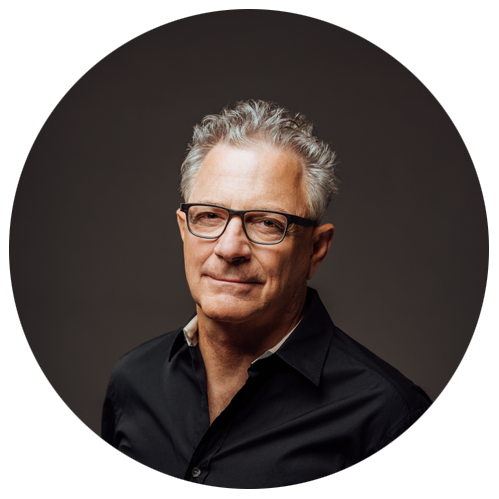Addiction is more common than most people think—more than 20 million people over the age of 12 have an addiction. One hundred die each day from overdose, more than triple the rate a mere 20 years ago. These statistics don’t even include the number of people who battle non-substance addictions to technology, sex and other dependencies that stagger into unhealthy extremes. As incidences of addiction have increased, so have treatment options and methodologies. No two people’s recovery journeys look alike.
Addiction recovery is a process rather than a single event. Some therapeutic approaches today seek to medicate away the pain that comes with the recovery process. Others, like Dream Tending, seek to engage you with your most authentic self and the deep-rooted psychological traumas and scars that invariably get tangled up in the healing process. By putting you in touch with the wisdom of your dreams, Dream Tending can become a great asset or supplement to your addiction recovery path.
What Is Dream Tending?
In pop culture, the multiplicity of dream methodologies often gets categorized in one general bucket of Freudian or Freud-derived ideas and is often referred to as “dream interpretation” or “dream analysis.” Dream Tending is a way of working with dreams that differs from the classic dream interpretation model. Interpretation implies a trained professional who recognizes dream symbols, with or without the consultation of a dream dictionary. This professional assigns diagnoses and a course of treatment from the findings.
The Dream Tending approach pioneered by Dr. Steven Aizenstat is the model I have used in the treatment of addiction for over 20 years. Dream Tending recognizes the wisdom of the dream itself and the unique associations drawn by the dreamer to the images in the dream.
Dream Tending is not designed to replace or supplant involvement in peer support groups, using mentors in the recovery process or a specialized treatment program for addiction. The model is ideal to address specific fears, to rehearse strategies for triggering or stressful situations, and to build upon an individual’s existing assets or “recovery capital.”
The Importance of Dreams in Healing
Dreams often reflect the challenges, accomplishment, and next steps for people overcoming alcohol or drug dependence. Some therapeutic approaches today seek to medicate away the dreams of people in addiction treatment or to dismiss the dreams as random firings of the brain. However, the modern approach of Dream Tending helps people recognize and act on current issues to strengthen their recovery.
Dream Tending differs from dream interpretation in that it relies more on the dreamer’s personal experience and on the inherent wisdom of the dream itself rather than relying only on an expert “interpreter” of the dream. Here are four people whose dreams set the course for their healing journey.
Neill
Neill was 66 years old and only five weeks removed from a life of chronic alcoholism when we met. Her health outlook was poor, and alcohol was the biggest risk she faced. A prolific dreamer, Neill brought to session a dream in which she was at a pool party with drinkers and non-drinkers. She had a glass of wine or two, not thinking of the dangers of relapse. She continued her dream as she stood alone by the pool:
“I stripped and dipped. I get out and there is a handsome young man teasing and chasing me trying to snatch away the towel. We are falling on the grass, him hovering over me. He smells the wine on my breath and his face changes from handsome to grotesque. I feel like I am looking at my disease.”
Neill also worked with painting some of her dreams, including a landscape with “trees of every color” representing seasons of life. Working with these images helped Neill regain her health, reconnect with what she loved in the outdoors and live to see six years of recovery before passing of natural causes.
Nora
Nora was about two weeks into a detox program she had entered because of marital “suggestion” and her own sense of defeat from alcohol. She dreamed:
“I am in my bedroom on the edge of my bed and there is a bottle of alcohol on the dresser. I lean forward to grab it but stop short when my husband comes into the room. He leaves and I start toward the bottle again. My pastor enters again, and I certainly cannot drink in front of him! Then I wake up.”
Nora was able to use the dream material and turn her treatment from something someone else was doing to her into something she was doing for herself with support. Additionally, the dream brought up for Nora the risk of relapse in the home which could now be factored into her discharge planning.
Rob
For man of 41 I’ll call “Rob,” the disease of addiction presented differently. He was in a detoxification program when we met. For 15 or more years, he had been in a recurrent nightmare with an unseen assailant who inevitably beat him up.
“No matter what I tried, I couldn’t fight back. It was like my fists were underwater, my punches were in slow motion.”
A particular skill in Dr. Aizenstat’s Dream Tending manual is to “make the stop and create distance” with the nightmare figure. When we tried this, Rob identified the assailant as his addiction personified. By communicating with the disease as a living form with its own autonomy, Rob was able to identify helpful resources to move from a sense of powerlessness to a partnership with supporters in “making a stop” with the terrifying dream figure long enough to see that it was really asking that he seek out and rely on allies.
Margaret
I’ll end with a story of a 65-year-old woman who had used benzodiazepines (drugs like Valium or Librium) for 45 years after a major life trauma at age 18. She shared with me a dream about six years ago that held such a numinous quality it remains alive for her and for me today.
“I am on an old bridge with my feet dangling in the water and I jump in. There is someone in the water, a woman I think, holding me up so I do not drown.”
As we talked, Margaret’s belief in angels shone forth. Through our work, she identified in this dream a particular angel, a life guardian present for her in every step of life, who could companion her in her daily recovery program.
For Margaret, for myself and for others like us, recovery may begin one day at a time but is enhanced through Dream Tending one night at a time.
Written by Randal Lea
References:

Stephen Aizenstat
Stephen Aizenstat, Ph.D., is the founder of Dream Tending, Pacifica Graduate Institute, and the Academy of Imaginal Arts and Sciences. He is a world-renowned professor of depth psychology, an imagination specialist, and an innovator. He has served as an organizational consultant to major companies and institutions, and as a depth psychological content advisor to Hollywood film makers. He has lectured extensively in the U.S., Asia, and Europe. He is affiliated with the Earth Charter International project through the United Nations, where he has spoken. Professor Aizenstat is the Chancellor Emeritus and Founding President of Pacifica Graduate Institute. He has collaborated with many notable masters in the field including Joseph Campbell, James Hillman, Marion Woodman, and Robert Johnson.
Unleash your creativity and innate genius
Learn the Power, Purpose and Intelligence of Dreams
Improve the quality of your relationships, discover your authentic life purpose and improve your emotional and physical health with the Dream Tending Academy.
Free e-book download
For over 40 years, I have devoted my life to understanding the profound wisdom and healing power that exists within each of us. I am excited to share my latest e-book that showcases how to tap into your dream state through the powerful applications of creativity and innovation. By following my groundbreaking methods and techniques, you will discover how to unlock your creative potential, increase your emotional and intellectual bandwidth, and realize your personal and professional goals. Download my e-book and unlock the secrets of your dreams and deep imagination!








